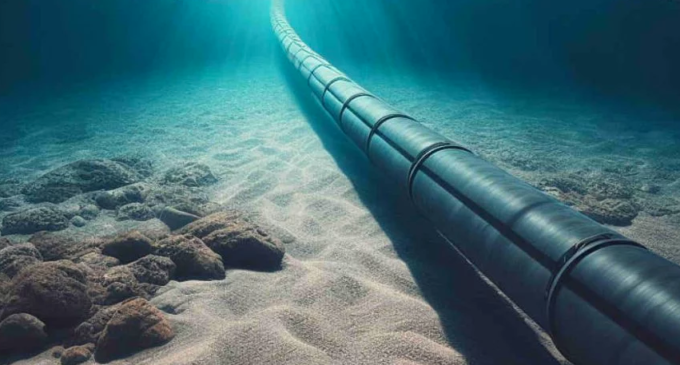In recent weeks, the African continent has grappled with a significant internet crisis following reports of severed underwater cables off its western coast. This development has stirred a maelstrom of speculation and concern, with some attributing the incident to mere coincidence, while others see the shadow of intentional sabotage looming large.
The MainOne cable owners’ assertion that the cables were unlikely to be cut intentionally, pending further investigation, has done little to quell the unease. Theories abound, especially in light of prior news suggesting that military groups were eyeing underwater cables for destruction. This narrative gains further traction with a video from YouTube, which discusses the vulnerability of such infrastructure.
Experts are divided on the issue. Some argue that the Houthis, a group implicated in potential sabotage, may require external assistance to inflict such damage, while others believe they are fully capable of operating solo. This debate is not merely academic; it touches upon the very resilience of our global communications infrastructure.
The International Cable Protection Committee’s 2022 report offers a sobering perspective, noting that most subsea cable incidents are accidental, typically caused by anchoring or fishing activities. Natural events like underwater earthquakes also play a role, and on rare occasions, technical failures are to blame [2]. Yet, these rational explanations seem insufficient in the face of concerted threats.
The specter of cyberattacks looms large, particularly after Dimitry Medvedev, a close ally of Russian President Vladimir Putin, suggested that Russia should be able to freely target the undersea cables of its adversaries. Such declarations cannot be dismissed lightly, as they reveal a strategic understanding of the cables’ importance and a willingness to exploit their vulnerabilities.
In June 2023, close ally of Russian President Vladimir Putin, Dimitry Medvedev, declared that Russia should have a free hand to destroy its enemies undersea communication cables. An estimated 99% of intercontinental internet traffic and data and voice communication is transmitted through fiber-optic submarine cables laid along the ocean floor, facilitating over $10trn worth of financial transactions daily. They are also used to carry sensitive government communications, such as supporting overseas military operations.
Infosecurity Magazine
Seacom, a major player in Africa’s undersea communications, acknowledges damage to cables but has not pinpointed a definitive cause.
Seacom, one of Africa’s leading undersea communications systems and fiber network operators, has suffered a disruption to its connectivity services as a result of breakage on a segment of its cable lining in the Red Sea. Confirming the incident, the company says other cables around the area have been damaged as well but has not been able to pinpoint the cause. Seacom’s East African cable system, which runs from Mombasa in Kenya to Zafarana in Egypt, went down.
Benjamindada
This ambiguity only fuels the fire of speculation. Meanwhile, Al Jazeera reports that the Houthis have mapped out cable routes on their Telegram channel, an act that the Yemeni government views with alarm, fearing targeted attacks on these critical infrastructures. Despite these concerns, the Houthis deny any involvement in the cable damage
In February, the Houthis published a map on their Telegram channel that showed the cables running along the bottom of the Red Sea. Telecom firms linked to Yemen’s internationally recognised government, who oppose the Houthis, said they fear the rebels may target undersea cables.
Aljazeera
In synthesizing these disparate pieces of information, one must tread carefully between the realms of verified facts and conjecture. The possibility of sabotage cannot be taken lightly, given the strategic importance of undersea cables in global communication and the explicit threats from certain actors. Yet, without conclusive evidence, we must also consider the historical data pointing to more mundane causes of cable disruption.
As we await the results of MainOne’s investigation, the international community should perhaps use this incident as a clarion call to bolster the security and resilience of undersea cable networks. Whether through enhanced monitoring, international cooperation, or technological safeguards, it is clear that the stakes are too high to leave these vital arteries of global connectivity unprotected.
In conclusion, while the truth behind Africa’s internet woes remains submerged in murky waters, the imperative for vigilance and preparedness is crystal clear. It is a narrative that intertwines the complexities of geopolitics, technology, and security, reminding us that in our interconnected world, the depth of our challenges is matched only by the profundity of our need for cooperation.
